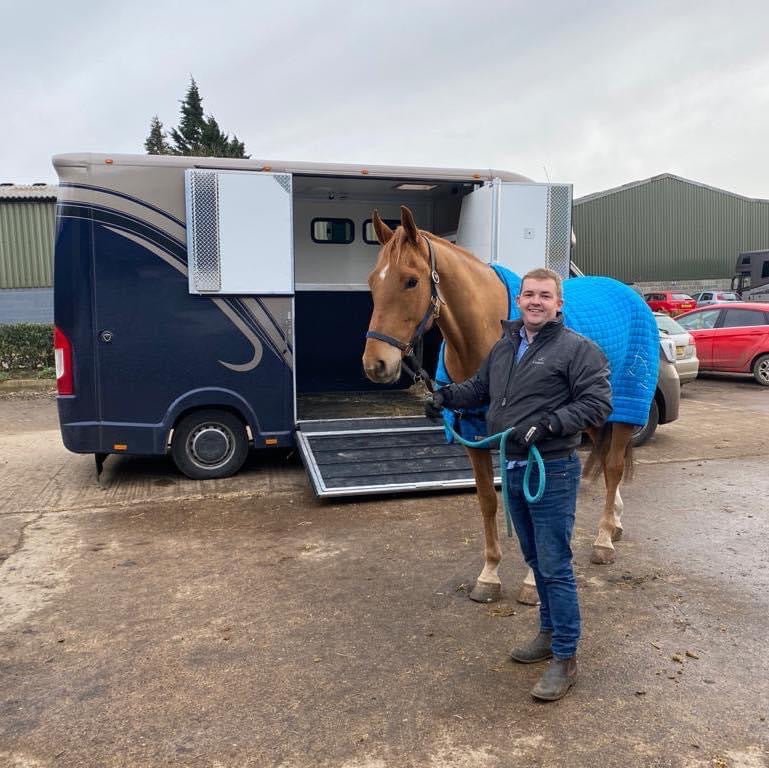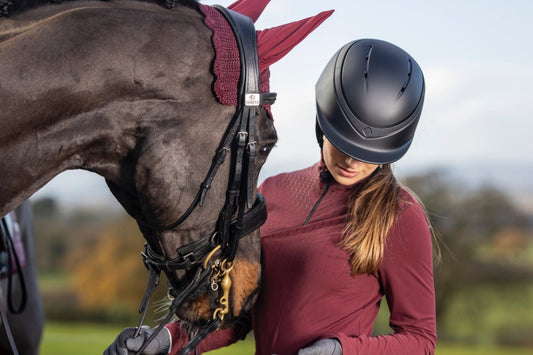Check your vehicle
Firstly, it’s important to consider the actual vehicle you are transporting your horse in - is it large enough? Are you used to driving or towing said vehicle? Is it comfortable for your horse? Vehicle upkeep is vital - we’ve all heard the horror stories about rotten floors, unsafe tyres, or broken bolts. Regular maintenance and servicing therefore must be carried out regularly to maintain safety and avoid such incidents. If you are towing it’s also important to ensure your vehicle can pull the trailers maximum authorised mass (MAM), you can check this by researching your car/ vans specifications to find the weight and towing capacity for them and it goes without saying that you will also need to ensure you have the required license to drive the transport type you have chosen.
Prepare for the journey
Before you load your horse take the time to pack everything you need for the trip and in case or emergency, that way your horse doesn’t have to spend any longer standing on the box than they need to. It’s also important if you’ve got a young horse or a horse that’s an inexperienced traveller than you spend some time practicing loading them into your vehicle before you are due to travel and I’d always recommend parking your box or trailer next to a wall to help guide your horse into it. On the day of travel make sure and allow plenty of time for loading so that you don’t have rush as this can be the most stressful part of travelling for many horses and always remember to stay calm.
The right equipment
In terms of equipment for travelling keep it simple and make sure your horse is familiar with any kit they will be wearing on their journey. We always recommend using a good fitting Leather Headcollar on your horse whilst travelling as not only does it look smart it will also break under pressure. When tying your horse up we recommend using the Shires Bungee Trailer Tie as opposed to your normal leadrope, as it features a quick release clip and is the perfect length to enable your horse to eat and check out their surroundings safely. If you use a leadrope and your horse is tied long, they may get injured from bickering with their travel companions and some horses will even try to turn round. We also suggest selecting a rug that’s appropriate for the season, temperature, and horses coat condition when it comes to rugging up your horse for the journey. Horses tend to get hot whilst travelling and although rugs offer a bit of extra protection, it’s important not to over rug your horse which could lead to them become uncomfortable. In most instances, we recommend using a simple cooler rug like the Pessoa Waffle or Fleece Cooler, which will help keep your horse’s body at a consistent temperature and prevent them becoming chilly after competitions, training, or long rides. Using travel boots is also a good idea to help protect your horses’ legs from and knocks and any potential injuries that make occur whilst trying to balance during the journey. However, we recommend that you choose travel boots that are breathable to avoid any overheating - for us the Premier Equine Travel-Tech Xtra Boots tick all the boxes with their 3D air mesh fabric providing a cooling airflow action. A tail bandage or tail guard is another essential that we recommend using whilst travelling to help protect the tail and tailbone from being rubbed and bashed of the ramp or sides of the lorry. The Acavallo Gel Tail Wrap would always be our first choice for travelling as the gel absorbs any impact and the sticky nature of the bandage means that it stays in place and keeps the tail in shape and looking tip-top for the show ring.
Manage anxiety
Always monitor your horse’s behaviour whilst travelling, if your horse is a nervous or stressy traveller you could consider using a calmer such as the NAF Magic Instant Calmer which is designed to help take the edge off, allowing them to relax and make them easier and safer to handle. For larger horses it may also be worth considering using the Woof Wear Poll Guard which you can easily attach to your horses headcollar. The thermos-bonded EVA padding design of this poll guard will help protect the top of their heads from injury should they become unsettled and bang their heads. With that in mind we would also recommend having a basic first aid kit on board. No matter whether your horse is an experienced traveller or not is always better to have a first aid kit and not need it, than to need it and not have it. Useful items to have weighing your first aid kit include - Vetwrap, Veterinary Gamgee, bandage tape, an antibacterial wash such as Tri-Scrub and Purple Spray.
Plan ahead
It’s important to plan your journey to incorporate breaks to allow your horse plenty of opportunities to eat, drink and rest, especially if you are travelling for longer than three hours. You will also need to take into consideration the need for carrying extra hay, haynets and having plenty water on board for your horse - just in case you are delayed for whatever reason. To make sure your horse is as comfortable as possible throughout your journey you should ensure your trailer or lorry is well ventilated, spacious and has a well-maintained rubber nonslip flooring with a covering of dust-free bedding to allow the horse to go to the toilet.
Finally, just as when you are driving just your car you need to make sure your lorry or trailer is kitted out with all the essentials - phone chargers, spare tyre, jump leads and details of breakdown cover and membership card. We 100% recommend having breakdown cover that includes recovery for your horses no matter whether you just travel locally or further afield you never know when you’ll need it and make sure your confident in what to do if you do breakdown and who you’ll need to notify - police etc.
Oh, and don’t forget to take your horses passport with you- it’s illegal to travel without it!
Your Questions Answered
Q. What side should my horse travel on?
A. If you’re travelling your horse on their own then you always travel them on the right hand side (behind the driver) and if two horses are travelling the heavier horse should always be on the right hand side. The reason for one horse or the heavier horse travelling behind the driver is for weight balance of the trailer or box. The camber of the road slopes towards the pavement, therefore the heavy horse should always be on the higher side to create an even balance which is especially important when cornering.
Q. If the weather is really warm, should I travel my horse?
A. If the weather is hot outside the trailer/ box can become up to 20 degrees warmer than the ambient temperature and for this reason when its warm, try to avoid travelling your horses during the hottest part of the day and make sure they are kept cool. If you’ve got Air Con, make sure it’s on and if not make sure your vehicle is as well ventilated as possible – open all the windows. Also make sure you carry more water and stop more often to offer them a chance to drink.
Q. How often should I check my horse on a journey?
A. It goes without saying that you should always check your horse regularly whilst travelling. We have a camera system fitted to the horse area of our boxes which enables us to monitor the horse’s behaviour constantly and we can see if any issues arise during the journey. This is 100% a system that we would recommend using and couldn’t be without.
Q. How often should I offer my horse a drink?
A. On long journeys you want to stop and offer your horses water at least every 4 hours – and when the weather is warmer, we would recommend stopping more frequently, at least every 2 hours.
Q. My horse doesn’t drink when we are travelling can you recommend anything to help with this?
A. It’s not uncommon for horses to refuse to drink when travelling. You could try adding some carrots or apples into the water bucket to encourage them to put their noses in and take a sip or add water to some feed to make it nice and sloppy to encourage them to drink that whilst they are eating. We recommend using Saracen’s Recovery Mash as its extremely palatable and contains all the vitamins and minerals horses need to stay hydrated.
Q. Can I travel my horse with tack on?
A. Yes, you can travel your horse tacked up on short journeys so that he’s ready to go when you reach your destination. The bridle and reins must be securely fastened before travelling and the headcollar and leadrope fitted correctly over the bridle – you must never tie your horse up from the bridle whilst travelling. We recommend if the horse is wearing a saddle that the girth should be tightened at the correct tension so that it doesn’t slip over the horses back whilst travelling and the stirrups should also be secured.
Q. Do horses travel better in a trailer without a partition?
A. Every horse is different, some like to travel with loads of space others prefer to be wedged in. We tend to find that larger horses do prefer to travel in a trailer with breach bars rather than a partition as this gives them more room to balance. If you find your horse is struggling to find their footing in the trailer and is rumbling about a lot, then we would recommend removing the partition and giving breach bars a go.
Q. Can I feed my horse before travelling?
A. As a rule horses should be fed any hard feed no less than one hour before they are due to travel to give them enough time to digest their food sufficiently.
Thanks to everyone who sent us their questions! We hope you have found Duncan's advice helpful.
Happy travels!




